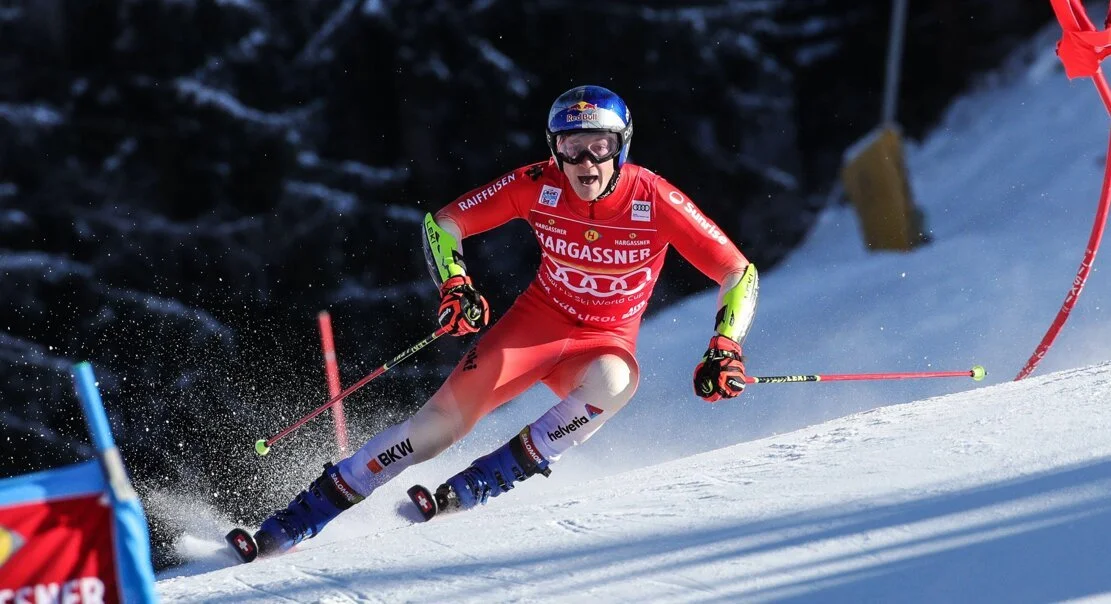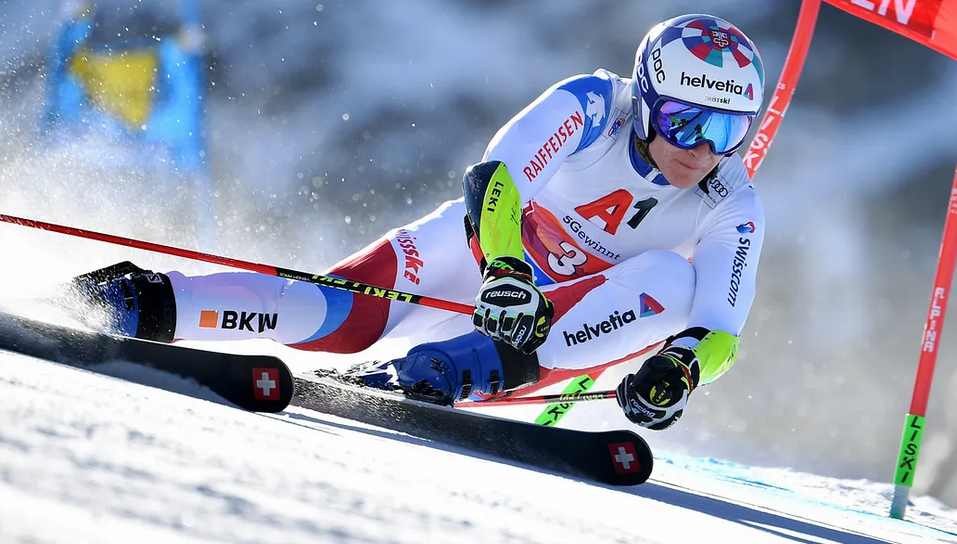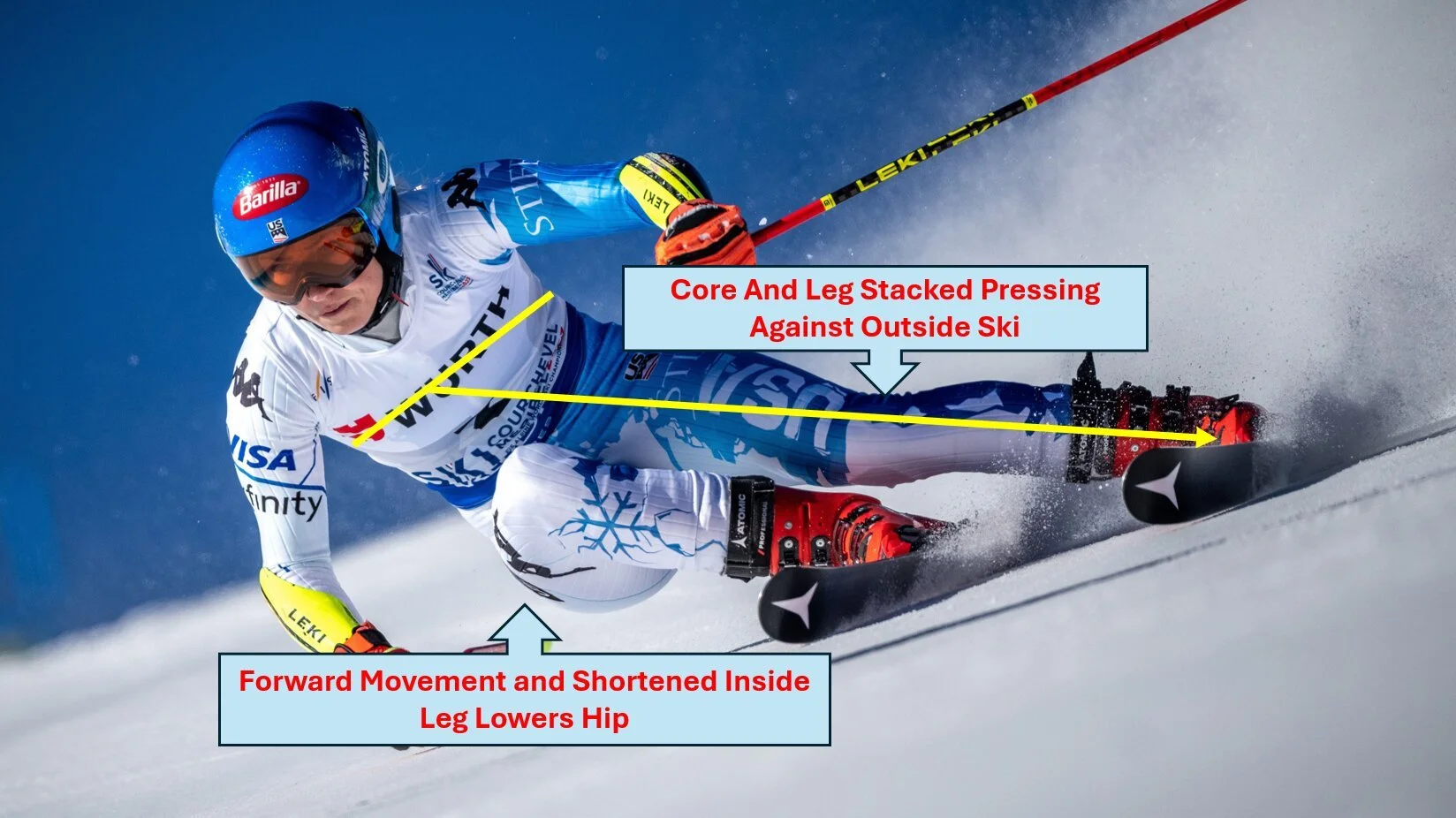Edge Angle and Pressure
Image by M.D.Pozzo/Alamy
Overview
Carving a turn requires the right balance of edge angle and pressure on the outside ski, depending on snow conditions, turn shape, speed, and ski design.
Four movements to create edge angle and pressure are reviewed.
Avoid tipping the outside knee inward and separating at the waist to maintain pressure on the outside ski and reduce the risk of injury.
Carving a turn requires the right edge angle to grip the snow and sufficient pressure on the outside ski to bend it, allowing it to carve a smooth, arced turn.
Factors that determine how much edge angle and pressure are needed on the outside ski in a turn include:
Snow Conditions – Hard-packed or icy snow requires a higher edge angle for grip, while softer snow needs less edge angle to avoid sinking or catching.
Turn Shape and Speed – Tighter turns and higher speeds require more edge angle and pressure to hold the line, while longer, more gradual turns need less.
Ski Design – Skis with more sidecut naturally carve at lower edge angles, while stiffer skis or those with less sidecut require more edge angle and pressure to bend properly.
Four Movements to Create Edge Angle and Pressure
Image Created by ARM
The Ski Technique Modules on how to perform these movements are below.
-

Flex the Outside Ankle
Flex your outside ankle towards your big toe and feel pressure under the ball of your foot. Stand on your outside ski.
-

Move Forward
Move your core and chest over your feet and down the hill. Feel pressure increase against your outside ski.
-

Roll the Inside Leg
Roll your inside leg away from your outside leg.
-

Shorten the Inside Leg
Raise your inside heel and thigh while rolling your inside ankle and knee toward the snow.
Pressure when making a turn with your right foot
Image by ARM Using Chatgpt Open Ai
This video explains and demonstrates how skis create edge angle, bend and carve.
Video by Projected Productions
Avoid Tipping the Outside Knee and Separating at the Waist
With ‘shaped’ skis, tipping the outside knee inward to create an edge angle is unnecessary. This action reduces pressure against the outside ski and increases the risk of knee injury. Refer to the Modules: Flex the Outside Ankle and Reduce Risk of Injury.
Separating at the waist is also excluded as this action applies pressure to the inside ski and interrupts the stacking of the core over the stacked outside leg. Words and phrases related to separating at the waist that are not included in the Alpine Race Method: ‘Bend like a banana,’ ‘Make the shape of a C,’ and ‘Feel a pinch at the waist.’
Elite skiers and racers instead create separation just below the shoulders, as demonstrated in the module.; Stack, Separate and Press .
The illusion of Dropping the Hip
While it may seem that Mikaela Shiffrin is separating at the waist to ‘drop her inside hip to the snow’ in the image below, this is merely an illusion.
In reality, she is moving forward and inside the turn, stacking her core and outside leg, and shortening her inside leg to create a higher edge angle and increased pressure on the outside ski.
As a natural consequence of these movements, her hip moves lower to the snow rather than as a deliberate action.
Shiffrin/Sipa/Alamy/Graphics by ARM
Key Takeaways
Optimize Edge Angle and Pressure: Increase the edge angle and pressure against the outside ski through four main movements: flexing the outside ankle, engaging core muscles to move forward, rolling the inside leg to maintain parallel shins, and shortening the inside leg while keeping shoulders level.
Avoid Common Mistakes: Avoid tipping the outside knee inward and separating at the waist, as these actions can decrease pressure on the outside ski, disrupt proper alignment, and increase the risk of injury.
Focus on Proper Techniques: Emphasize maintaining effective pressure on the outside ski and ensuring alignment by separating just below the shoulders and stacking the core and outside leg against the ski.
Suggested Learning Modules
Return to Ski Technique
Important Message: Skiing and ski racing involve inherent risks. It’s essential to ski responsibly and stay within your skill level and personal comfort limits.




